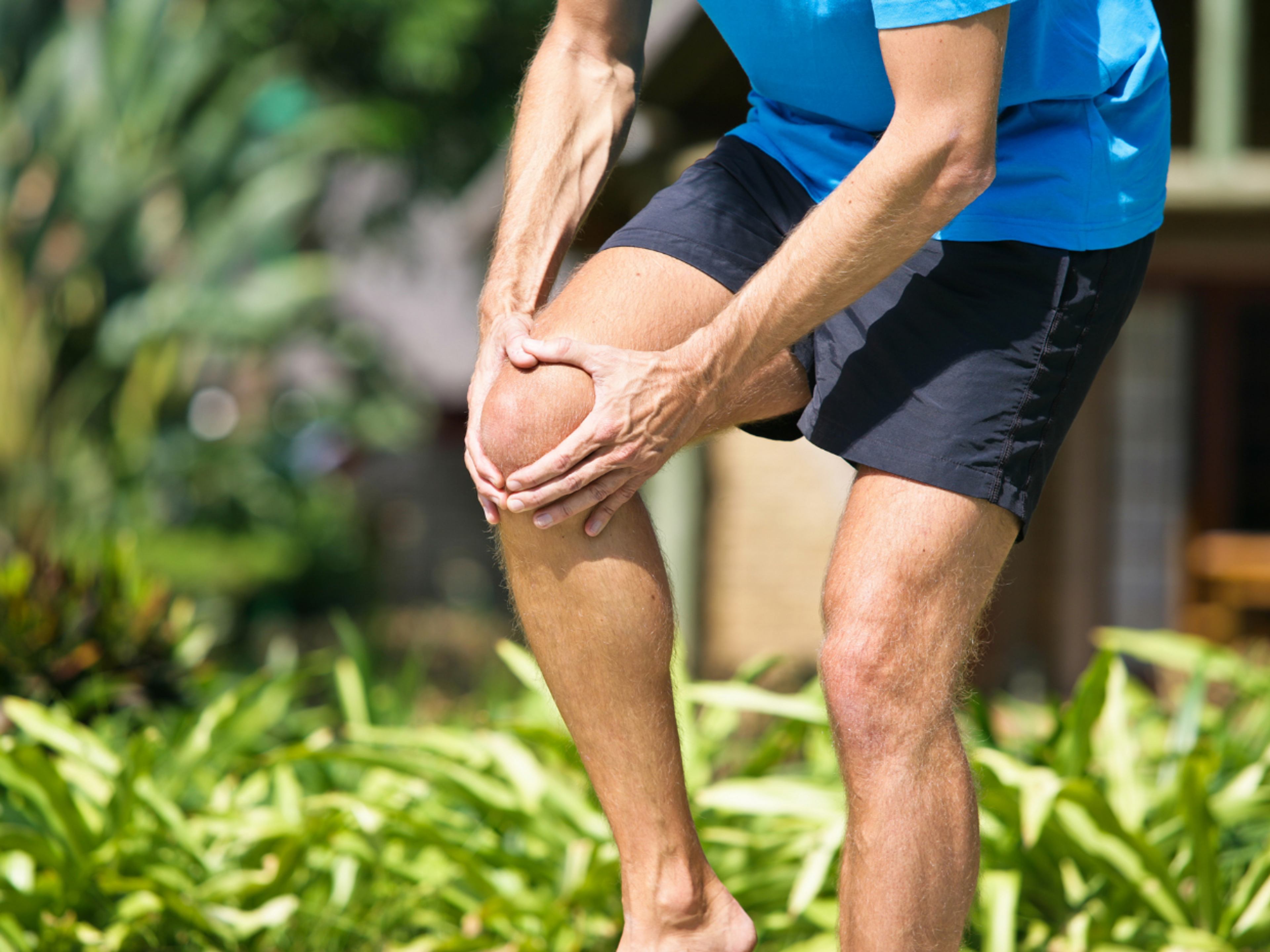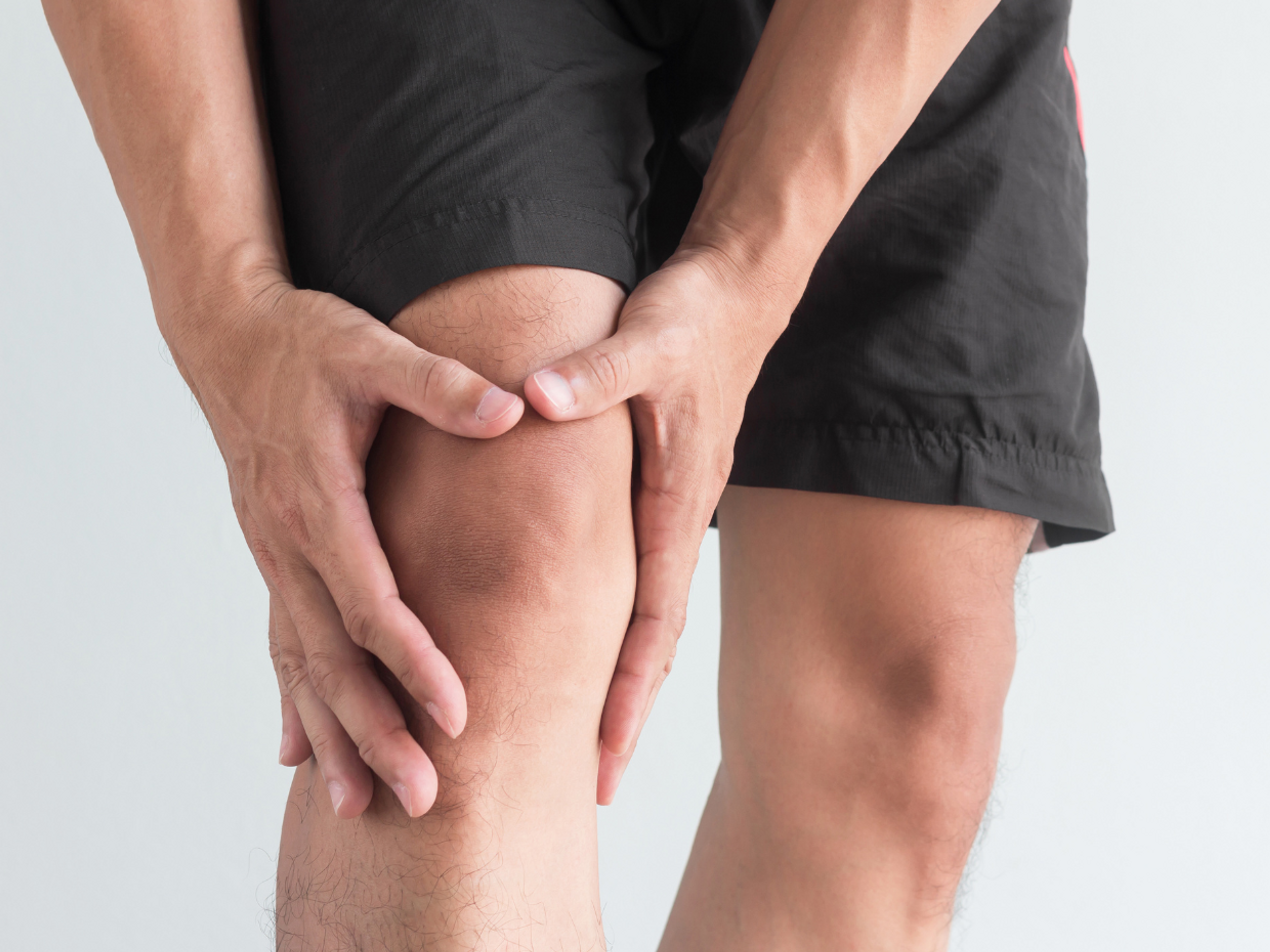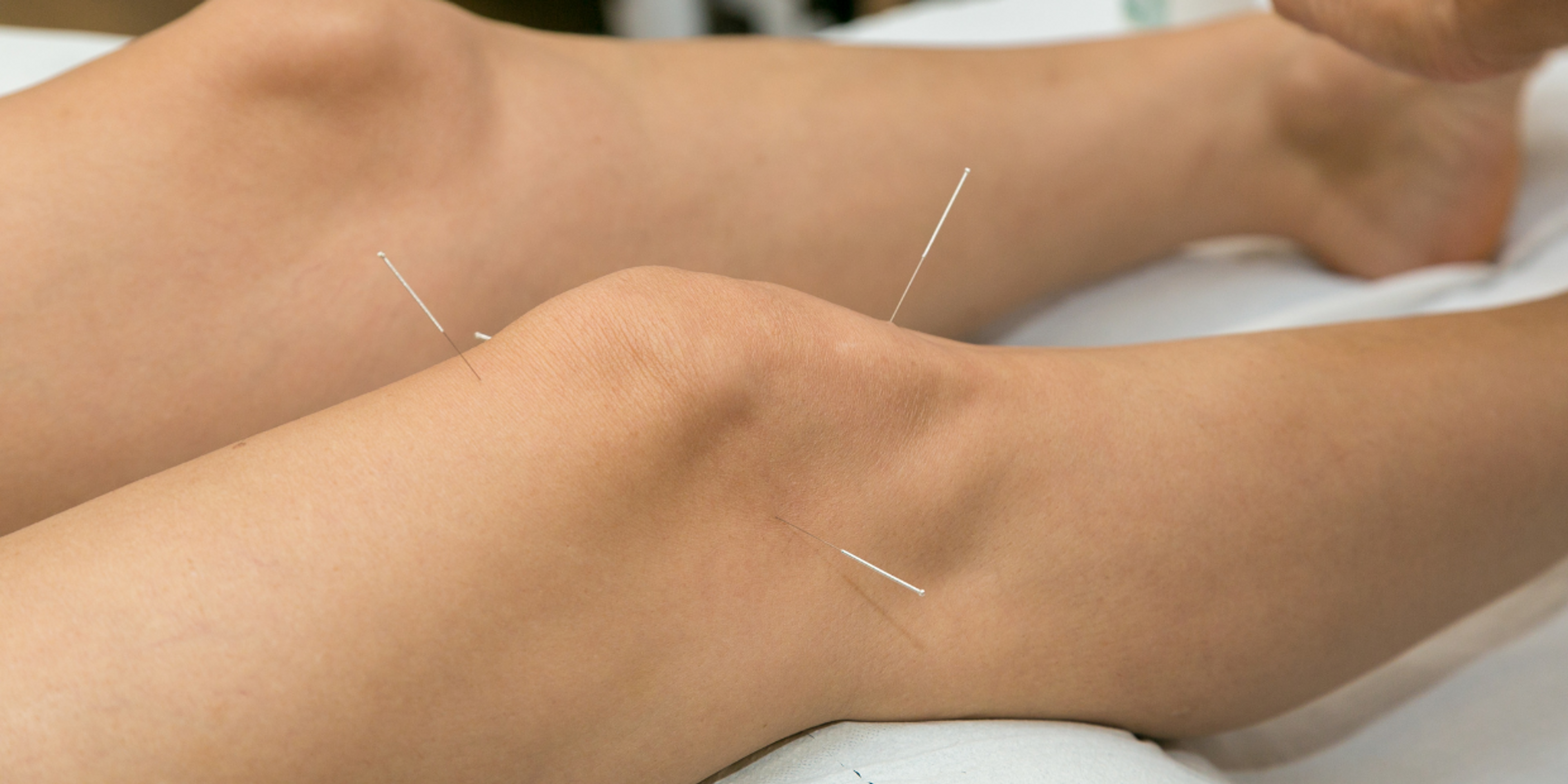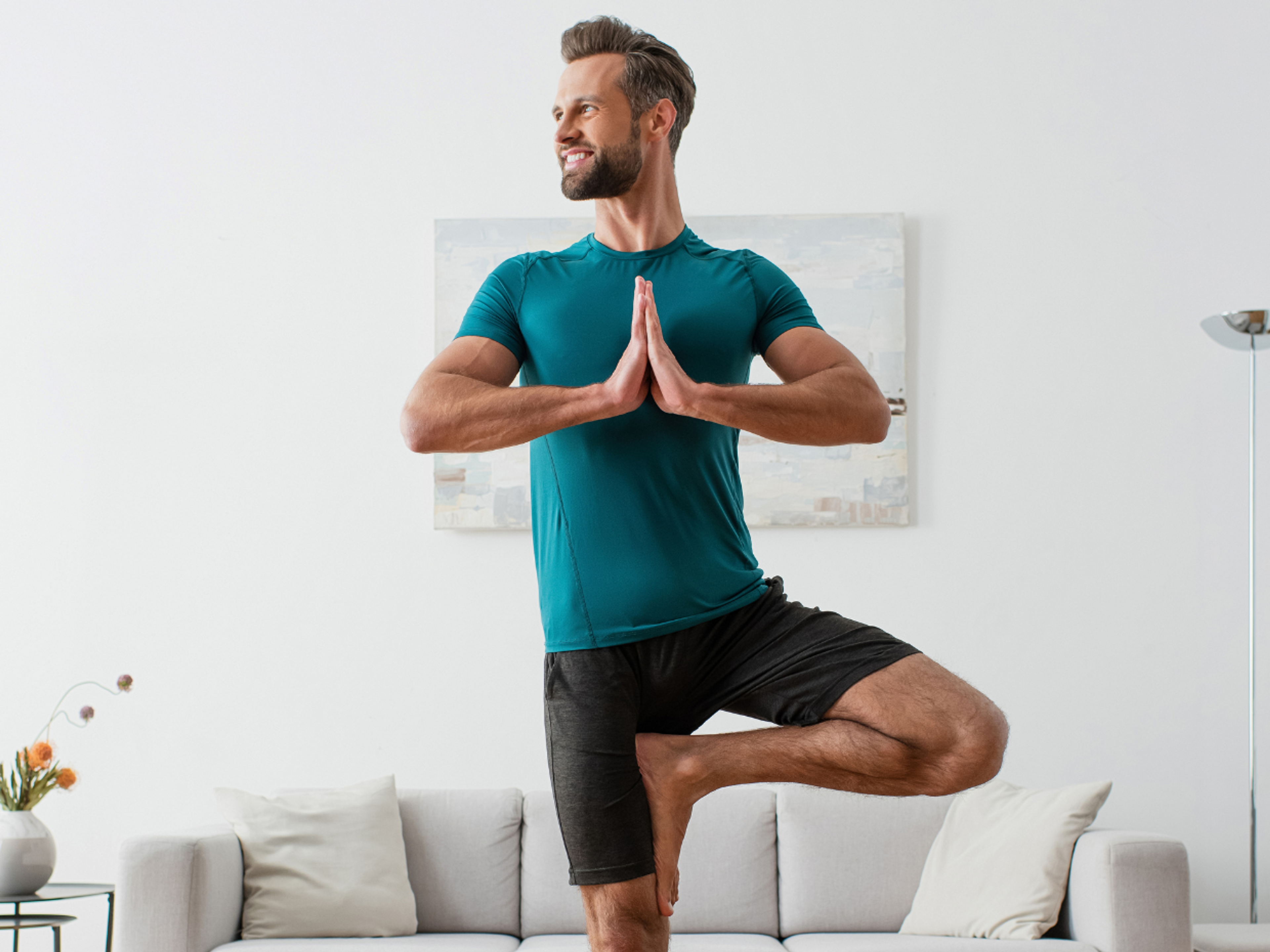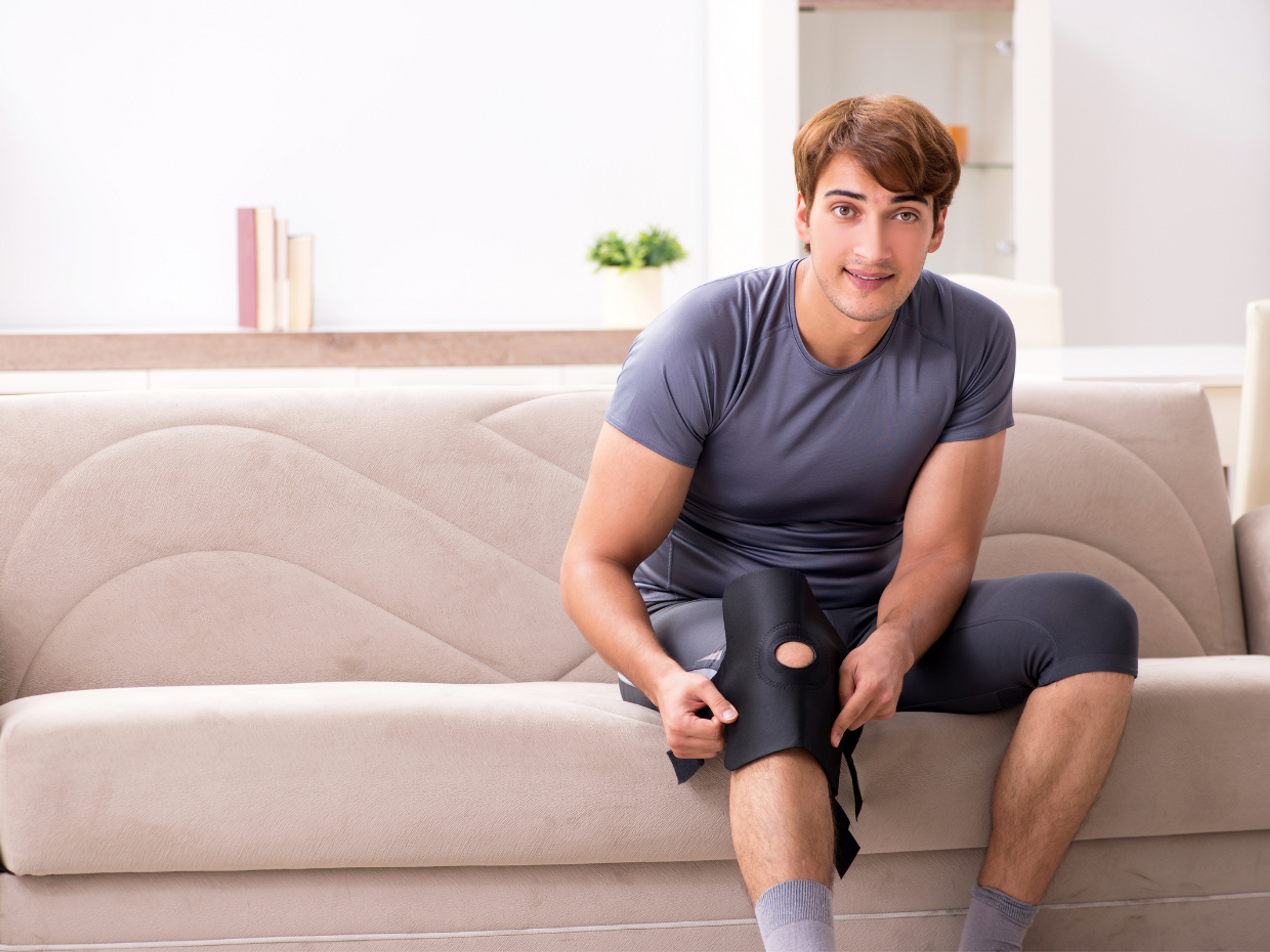How to treat meniscus tears: A guide for runners
Causes for meniscus tears from running
Usually, a runner may tear a meniscus when they experience a sudden knee twist, e.g., trip or step on a stone.
You may get diagnosed with a degenerative meniscus tear if you're an older runner (over 40). This simply means that your meniscus has worn a bit thin through natural ageing, which means it can tear with very little force.
Some people worry that running may be bad for their knees and cause extra wear and tear. The research shows this is not the case. When done at a recreational level, running seems to protect your knees from osteoarthritis (OA) compared to sedentary individuals.
However, there is some evidence that competitive runners who train at high volumes and intensity may have a slightly increased risk of developing OA.
Can I run with a torn meniscus?
Yes, you can run with a meniscus tear, but it depends on your specific circumstances.
When looking at uninjured people, researchers have found that up to 50% of people over the age of 40 walk and run around with meniscus tears that give them no trouble.
So, you can regain full function without the tear growing back together. You can read more about the treatment options and why some tears don't fuse here.
It is usually OK to run with a meniscus tear if:
- You have completed your rehab and have regained full range of motion, strength, and control in your leg; and
- You can walk at a brisk pace for 30 minutes without a problem; and
- Running doesn't cause your knee to hurt or swell during or in the 24 hours after the run.
However, it's important to slowly ease back into running. We've discussed how to do this safely after a meniscus tear lower down in this article.
When not to run
If you have a meniscus tear that is still causing you pain and swelling, it may be best to first focus on your rehab and cross-train until your knee has fully settled down.
Low-impact activities like cycling are brilliant for meniscus recovery because they provide lots of movement (which feeds the joint) without placing extra strain on the injured meniscus.
What are the risks of running with a meniscus tear?
Running actually carries a low risk for meniscus tears. Activities like deep squatting, deep kneeling, or sports that involve lots of pivoting and changing direction have higher risks.
At the end of this article, we share tips for reducing your risk of reinjuring your meniscus.
How to get back running after a meniscus tear
The only way to restore the strength, endurance, and control you require for running is by following a progressive rehab plan. We've previously discussed the different treatments you can use to reduce the pain and swelling in your knee.
The exercises you start with must match your knee's current ability and stage of recovery. Do too much too soon, and it will make your knee worse. Do too little, and it will slow your recovery.
It should also slowly increase in intensity and difficulty until you've reached the level you need to run again safely.
We'll discuss the rehab phases in more detail below. If you want more help, have a look at the Meniscus Tear Rehab Plan in the Exakt app. We've designed it with these elements in mind.
After each exercise session, the app uses your feedback to suggest the best intensity for the next workout and progress you through the rehab stages. You can download it from the app store.
First phase of recovery
This is when your knee is still quite sore and swollen. The aims during this stage are to:
- Allow your meniscus tear to settle by not walking long distances or by using crutches, or knee braces if needed
- Regain your range of motion in your knee through gentle exercises typically used to reduce swelling in sprained knees
- Maintain as much muscle strength and function in your legs as possible through exercises that don't strain the meniscus.
- Work on improving core strength in supine (lying on your back), e.g., crunches
- Gentle calf stretches (like the standing calf stretch) can help reduce discomfort
Exercise examples
Top tip
You can usually move on to the next phase of rehab when:
- You can walk short distances around the house without much pain; and
- You can comfortably bend your knee past a right angle (90 degrees).
Second phase of recovery
In this phase, you slowly increase the load on your meniscus and knee and prepare them for running.
We've divided this phase into several stages in the app to make it easier to know when it is safe to transition as you gain more control and strength.
The exercises we use during this phase:
- Start in stable positions (e.g., double-leg squats) and slowly progress to less stable positions that resemble the running action (e.g., single-leg squats)
- Start with static holds or slow movements (e.g., wall squats) that are easy to control and progress to dynamic moves (e.g., forward lunges) that require a higher level of control
- Start in the range of movement that you can do without pain and slowly works towards the full range of motion as your meniscus tear recovers
- Slowly increase the force on your knee by using weights, changing from double to single leg support, or adding dynamic movements
- Include flexibility, core, and general leg strengthening exercises to ensure all parts of your body can move freely and share the load when you run
Exercise examples
Top tip
You can usually move on to the final rehab phase when:
- When you can walk for 30 minutes at a brisk pace; and
- You can perform high-load exercises that challenge your control and balance without pain and with good control.
Final phase - Return to running
Once you're ready to get back to running, it's essential to ease into it slowly. Your meniscus won't yet have the strength and endurance to cope with continuous running. This is why using a run-and-walk program is so beneficial.
A run-and-walk program alternates short periods of running with walking. The walk intervals allow your meniscus to recover, and then it can tolerate another short run.
This method usually enables you to run more in one session than if you tried running continuously.
As your meniscus grows more robust and gets used to running, you can increase the run interval duration and slowly reduce the amount of walking until you can run continuously without a problem.
In general, it is good to start with the following:
- On flat, even terrain
- Use a walk-and-run plan
- Only do between 2 to 3 runs per week
- Have recovery days between the runs to allow full recovery
- Build your slow running endurance until you can do your normal running volume at an easy pace before adding in any fast running or hill repeats
It is also good to continue doing strength and balance workouts once or twice weekly to maintain strength and control.
How can you prevent meniscus tears when running?
Running applies large forces to your legs. The menisci have the vital job of buffering that force, sharing it across the knee joints and into the rest of the body. But it is not meant to carry all that load alone. The rest of the body should share it.
Some ways to reduce the force and strain on the menisci include:
- Regular strength training keeps your whole body strong
- Balance exercises help you control your legs better
- Losing weight decreases forces through joints
- A balance of high (running) and low-impact (cycling or swimming) activities improves fitness while reducing the overall impact on your knees
- Leaving enough rest between workouts promotes recovery
- Supportive and well-fitting shoes keep your body aligned from feet up
- Maintaining flexible joints and muscles balances the body and improves movement patterns
- A good warm-up and cool-down routine prepares and recover your body well
- Avoiding sudden increases in training allows your body to adapt to new loads
Check out the injury prevention plan for runners included in the app if you want help to prevent your meniscus tear from recurring. Besides helping you choose the most appropriate exercises for your level, it also enables you to understand when best to schedule your workouts in relation to your runs.
